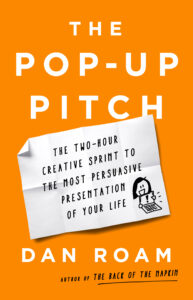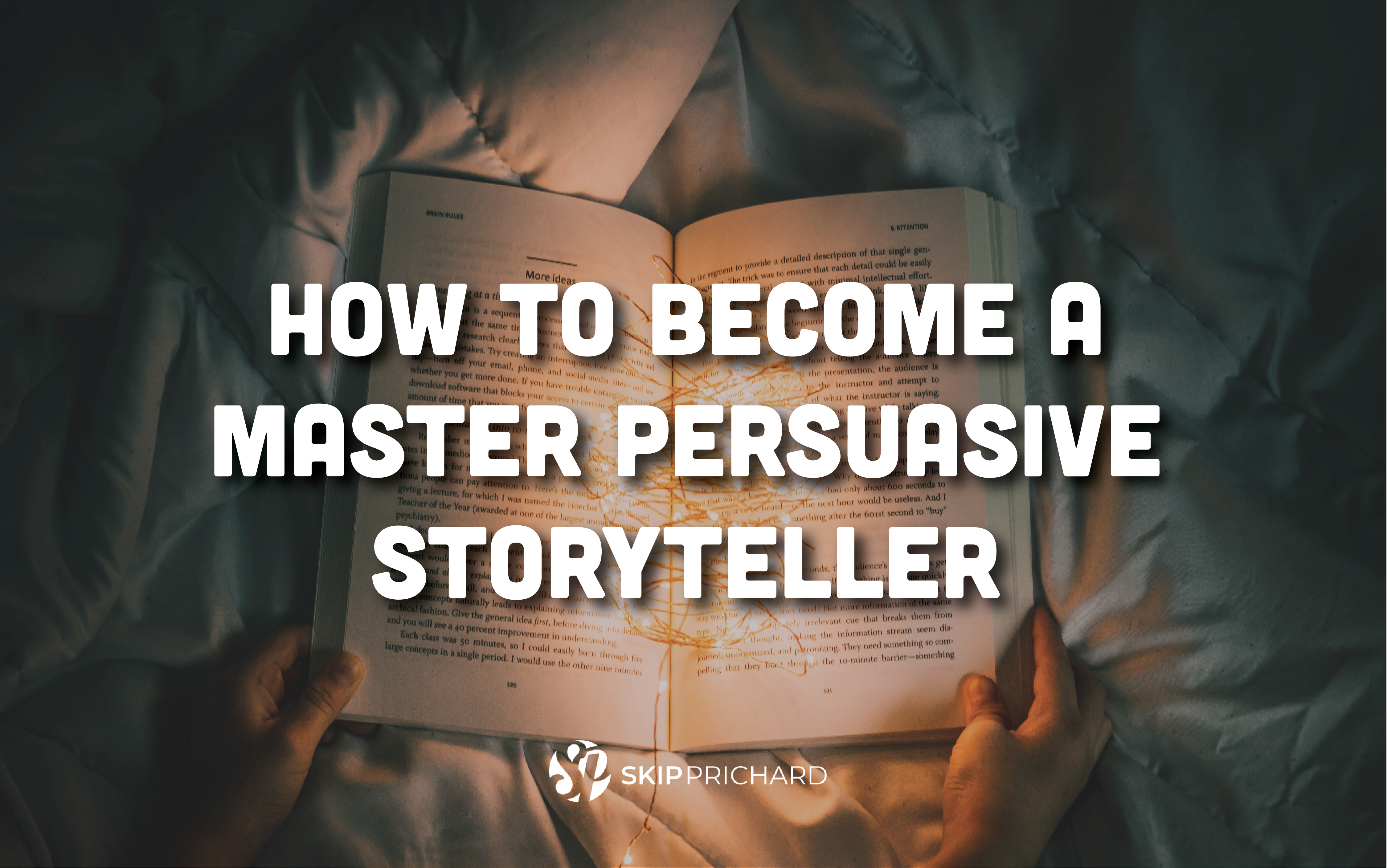Tell A Great Story
Presenting to distracted audiences is now the norm. Whether virtual or physical, presenters have less time to grab and hold the audience’s attention.
Persuasive storytelling is one of the most important key skills in almost every profession.
Using simple pictures drawn on the back of a napkin, Dan Roam explained American health care, helped Peet’s Coffee earn a billion dollars, and is working with Google to redefine how the world thinks about the internet. In his new book,
The Pop-Up Pitch, Dan shares his two key secrets to help you create the most persuasive presentation of your life — using just pen, paper, and the world’s oldest storyline.
I recently spoke with him about his findings.
What do most people get wrong when they think about better presenting?
People tend to forget that presentations ought to be the most engaging part of the day, for audience and presenter alike. The same people (all of us) who typically hate presentations happily paid more than $150 Billion collectively last year to watch movies. Why? Because movies tell a visual story. Wouldn’t it be great if we could do the same for our presentations? It turns out, we can. It starts by asking not, “What is my presentation about?” but instead asking, “What story does my presentation want to tell?” Then build it from there.
How can drawing change a leader’s perspective?
Our visual minds are constantly active, searching the world around us for patterns and stories to guide us safely through the day. Because most of this process is unconscious, we tend not to recognize how powerful our visual system is. As a result, we don’t understand how to take advantage of the boundless expanse of our visual memory banks as a source for quick and clear communication. But once we start to draw out our ideas and concepts, all that changes. Using the simplest of symbols, like squares and circles and arrows, we give our mind’s eye the chance to share what it sees – and it turns out we know a lot more about our own ideas than we think.
What is the pop-up pitch and what are some of its benefits?
The Pop-Up Pitch is a two-hour visual and verbal “fill in the blanks” sprint that helps us create the most persuasive presentation of our lives and then present it to any audience in less than seven minutes. The Pop-Up Pitch works so well because it combines history’s most tried-and-true story template, classic American-style win-win sales persuasion, and the latest in behavioral economics. The result is a ten-turn story that gives the presenter unshakeable confidence in her or his story and gives the audience a captivating and memorable experience.
How is the pop-up pitch useful in persuasive situations?
Rather than spending weeks polishing a complex PowerPoint that nobody really wants to hear, the Pop-Up Pitch offers a simple, low-key, high-impact, and deeply human alternative. When prep time is limited and audience attention will be hard to attract and retain, the Pop-Up Pitch offers a nearly foolproof way to compose your thoughts into a simple visual story that can’t help but capture mindshare and drive action.
I love the ten-page pitch. How is it best used?
The 10-Page Pitch is the secret sauce of the whole program. It is a simple ten-turn, emotionally compelling template that guides the presenter step-by-step through the creation of a captivating story which audiences will find unconsciously familiar and yet powerfully compelling. By helping presenters prepare quickly, the Pop-Up Pitch typically delivers better presentations that connect at a more human level than the slickest PowerPoints.
Would you share one of your many examples of putting it in action?
In the depths of the COVID-19 lockdown, executives at Salesforce developed a long-term scenario-planning tool to help enterprise customers rediscover their decision-making confidence in a world turned upside down. It was a free tool made available to anyone, whether a Salesforce customer or not. The challenge was to convince stretched-thin business leaders to download and try out a new tool. We used the 10-Page Pitch to tell a simple story about the benefits of the tool, and it was a huge hit – in spite of being launched in an overwhelmingly busy and chaotic time.
How have you seen technology impact your work and presentations?
 In the presentation world, we all knew that one day everything would go remote, but we never expected it to happen as quickly and completely as it did in the past year and a half. Luckily, as we all shifted to full-time home office, the tech was there to support us. Online remote meeting software, touchscreen monitors, and new shared document systems have shown us that all-remote all the time can work well. At the same time, they have also shown us the importance of face-to-face human connection, more deeply than ever. To me, the following will always be true: the key to better presentations isn’t a better understanding of technology. It’s a better understanding of humanity. That’s what the Pop-Up Pitch is really all about.
In the presentation world, we all knew that one day everything would go remote, but we never expected it to happen as quickly and completely as it did in the past year and a half. Luckily, as we all shifted to full-time home office, the tech was there to support us. Online remote meeting software, touchscreen monitors, and new shared document systems have shown us that all-remote all the time can work well. At the same time, they have also shown us the importance of face-to-face human connection, more deeply than ever. To me, the following will always be true: the key to better presentations isn’t a better understanding of technology. It’s a better understanding of humanity. That’s what the Pop-Up Pitch is really all about.
For more information, see The Pop-up Pitch.
Image Credit: Nong Vang

